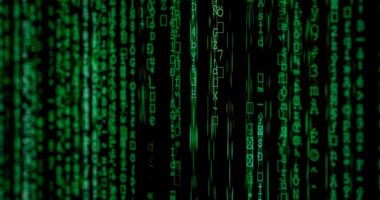NFT stands for non-fungible token. A non-fungible token is a digital asset that represents ownership or authenticity of a unique item or content, such as artwork, videos, music, or collectibles, using blockchain technology. Unlike fungible cryptocurrencies like Bitcoin or Ethereum, which can be exchanged on a one-to-one basis, NFTs are unique and cannot be exchanged like-for-like.
This uniqueness and scarcity contribute to their value and appeal to collectors and investors. NFTs are typically traded using cryptocurrency and stored in digital wallets. Each NFT contains metadata providing information about the digital asset it represents, including creator, ownership history, and associated royalties.
This metadata is stored on a blockchain, a decentralized and transparent digital ledger that records transactions across a computer network. Blockchain technology ensures the authenticity and provenance of NFTs, making them difficult to counterfeit or tamper with. Consequently, NFTs have become a popular method for creators to monetize digital works and for collectors to invest in unique digital assets.
Key Takeaways
- NFT stands for non-fungible token, a unique digital asset that represents ownership or proof of authenticity of a specific item or piece of content.
- Ethereum (ETH) plays a crucial role in the NFT revolution as it is the most popular blockchain platform for creating and trading NFTs due to its smart contract functionality and widespread adoption.
- Bitcoin (BTC) has had a significant impact on NFTs by increasing mainstream awareness and adoption of cryptocurrencies, leading to a surge in interest and investment in NFTs.
- The latest news in the NFT world includes high-profile NFT sales, collaborations between artists and NFT platforms, and the integration of NFTs into various industries such as gaming and music.
- NFTs are revolutionizing the art industry by providing artists with new opportunities to monetize their work, reach a global audience, and ensure the authenticity and provenance of their creations.
- The future of NFTs is expected to involve further integration into various industries, advancements in NFT technology, and potential challenges related to regulation and environmental impact.
- Investing in NFTs offers the potential for high returns and opportunities to support artists and creators, but it also comes with risks such as market volatility, lack of regulation, and potential for fraud.
The Role of Ethereum (ETH) in the NFT Revolution
Smart Contracts: The Backbone of NFTs
Smart contracts are self-executing contracts with the terms of the agreement directly written into code. This allows NFT creators to program specific rules and conditions for their digital assets, such as royalties for secondary sales or limited edition releases. This programmability has made Ethereum the go-to platform for NFTs, providing flexibility and customization for creators and collectors alike.
Ethereum’s Support for Decentralized Applications
Ethereum’s support for dApps has facilitated the development of NFT marketplaces and platforms, such as OpenSea, Rarible, and Foundation. These marketplaces enable creators to mint, list, and sell their NFTs, while providing collectors with a wide range of digital assets to discover and invest in.
A Secure and Transparent Platform for NFT Transactions
Ethereum’s decentralized nature ensures that NFT transactions are secure, transparent, and censorship-resistant, further bolstering the appeal of NFTs to both creators and collectors. As a result, Ethereum has become synonymous with the NFT revolution, driving innovation and growth in the digital art and collectibles space.
The Impact of Bitcoin (BTC) on NFTs

While Ethereum has been at the forefront of the NFT revolution, Bitcoin, the first and most well-known cryptocurrency, has also had an impact on the NFT market. Bitcoin’s rise in value and mainstream adoption has brought increased attention and investment to the broader cryptocurrency space, including NFTs. As more people become familiar with Bitcoin and other cryptocurrencies, they are also discovering NFTs and the potential for unique digital ownership that they offer.
Bitcoin’s role in the NFT market is not limited to its influence on investor sentiment. Some NFT marketplaces and platforms have started to accept Bitcoin as a form of payment for purchasing NFTs, expanding the accessibility and liquidity of digital assets. Additionally, Bitcoin’s underlying blockchain technology has inspired new developments in the NFT space, such as layer 2 solutions and interoperability protocols that aim to improve scalability and reduce transaction fees for NFTs.
As a result, Bitcoin’s impact on NFTs extends beyond its status as a store of value or digital currency, contributing to the ongoing evolution and maturation of the NFT market.
Exploring the Latest News in the NFT World
| Date | Number of NFTs Released | Marketplace Volume |
|---|---|---|
| January 2022 | 5000 | 100 million |
| February 2022 | 7500 | 150 million |
| March 2022 | 10000 | 200 million |
The world of NFTs is constantly evolving, with new developments and trends shaping the market on a regular basis. One of the latest trends in the NFT world is the emergence of social media platforms and brands entering the space to engage with their audiences through digital collectibles and exclusive content. This trend has seen major companies, artists, and celebrities launching their own NFTs to connect with fans and monetize their digital presence.
Additionally, there has been a growing interest in environmental sustainability within the NFT community, leading to discussions around eco-friendly blockchain solutions and carbon offset initiatives to mitigate the environmental impact of NFT transactions. Another significant development in the NFT world is the integration of virtual reality (VR) and augmented reality (AR) technologies with NFTs, creating immersive experiences and interactive digital art installations. This convergence of NFTs with VR/AR has opened up new possibilities for artists and creators to showcase their work in virtual galleries and exhibitions, expanding the reach and accessibility of digital art beyond traditional physical spaces.
Furthermore, there has been an increasing focus on inclusivity and diversity in the NFT space, with initiatives aimed at supporting underrepresented artists and communities through grants, mentorship programs, and collaborative projects.
How NFTs are Revolutionizing the Art Industry
NFTs have had a profound impact on the art industry, revolutionizing how art is created, bought, sold, and experienced. One of the key ways in which NFTs are transforming the art industry is by empowering artists to directly monetize their work without relying on traditional intermediaries such as galleries or auction houses. This direct-to-consumer model enables artists to retain more control over their creative output and earn royalties from secondary sales of their NFTs, providing them with a sustainable source of income and financial independence.
Furthermore, NFTs have democratized access to art by lowering barriers to entry for both creators and collectors. Artists from diverse backgrounds and regions can now showcase their work on global platforms and reach a wider audience of art enthusiasts and collectors. Similarly, collectors can discover and invest in a diverse range of digital art styles and genres, breaking away from traditional art market constraints and elitism.
This democratization of art ownership has fostered a more inclusive and accessible art ecosystem that celebrates creativity and cultural diversity. Moreover, NFTs have redefined the concept of ownership in the art world by introducing digital scarcity and provenance to digital assets. Collectors can now own unique digital artworks as NFTs, with verifiable proof of authenticity and ownership recorded on a blockchain.
This shift towards digital ownership has challenged traditional notions of art ownership and preservation, paving the way for new forms of artistic expression and curation in the digital age.
The Future of NFTs: What to Expect

Gaming and Virtual Worlds
NFTs have already gained traction in gaming as a way to tokenize in-game assets, such as skins, weapons, or characters, allowing players to buy, sell, and trade digital items across different gaming platforms. As gaming continues to embrace blockchain technology and decentralized economies, NFTs are poised to play a central role in shaping the future of virtual economies and player ownership rights.
Decentralized Finance (DeFi) Integration
Another aspect of the future of NFTs is their integration with decentralized finance (DeFi) applications. DeFi platforms are exploring ways to leverage NFTs as collateral for loans or as part of liquidity pools, unlocking new opportunities for asset-backed lending and yield generation. This convergence of NFTs with DeFi has the potential to create novel financial instruments and investment opportunities that bridge the physical and digital worlds.
Technological Advancements and Sustainability
Advancements in blockchain technology, such as scalability solutions and interoperability protocols, are expected to address current challenges facing NFTs, including high gas fees and environmental concerns. These technological developments will enhance the user experience for creators and collectors while promoting sustainable practices within the NFT ecosystem.
The Potential Risks and Benefits of Investing in NFTs
Investing in NFTs presents both potential risks and benefits that investors should carefully consider before entering the market. One of the key benefits of investing in NFTs is the potential for high returns on investment, especially for rare or sought-after digital assets. As interest in NFTs continues to grow, there is an opportunity for early adopters to acquire valuable digital collectibles that may appreciate in value over time.
Additionally, investing in NFTs can provide exposure to innovative artists and creators who are pushing boundaries in the digital art space, offering a unique opportunity to support emerging talent while diversifying an investment portfolio. However, investing in NFTs also comes with inherent risks that investors should be mindful of. The volatility of the NFT market can lead to price fluctuations and speculative bubbles that may result in financial losses for investors.
Furthermore, due diligence is essential when evaluating the authenticity and provenance of NFTs to avoid potential scams or copyright infringement issues. Additionally, regulatory uncertainty surrounding NFTs in certain jurisdictions may pose legal risks for investors, requiring thorough legal counsel before engaging in large-scale transactions. In conclusion, while investing in NFTs offers exciting opportunities for collectors and investors alike, it is crucial to approach this emerging asset class with caution and due diligence to navigate potential risks while maximizing potential rewards.
FAQs
What does NFT stand for?
NFT stands for non-fungible token.
What is a non-fungible token (NFT)?
A non-fungible token is a digital asset that represents ownership or proof of authenticity of a unique item or piece of content, such as art, music, videos, or collectibles, using blockchain technology.
How does an NFT work?
An NFT works by using blockchain technology to create a unique digital certificate of ownership for a specific item or piece of content. This certificate is then stored on a decentralized ledger, making it tamper-proof and verifiable.
What makes NFTs different from other digital assets?
NFTs are different from other digital assets because they are non-fungible, meaning each NFT is unique and cannot be exchanged on a one-to-one basis like cryptocurrencies. Additionally, NFTs have the ability to represent ownership and provenance of digital content.
What can be turned into an NFT?
Almost any digital content can be turned into an NFT, including artwork, music, videos, virtual real estate, virtual goods in video games, and even tweets or memes.
How are NFTs bought and sold?
NFTs are bought and sold on online marketplaces that support the trading of digital assets. These marketplaces use cryptocurrency as the primary form of payment for NFT transactions.
What are the benefits of NFTs?
Some of the benefits of NFTs include providing creators with a new way to monetize their digital content, enabling provenance and ownership of digital assets, and creating new opportunities for collectors and investors in the digital space.





